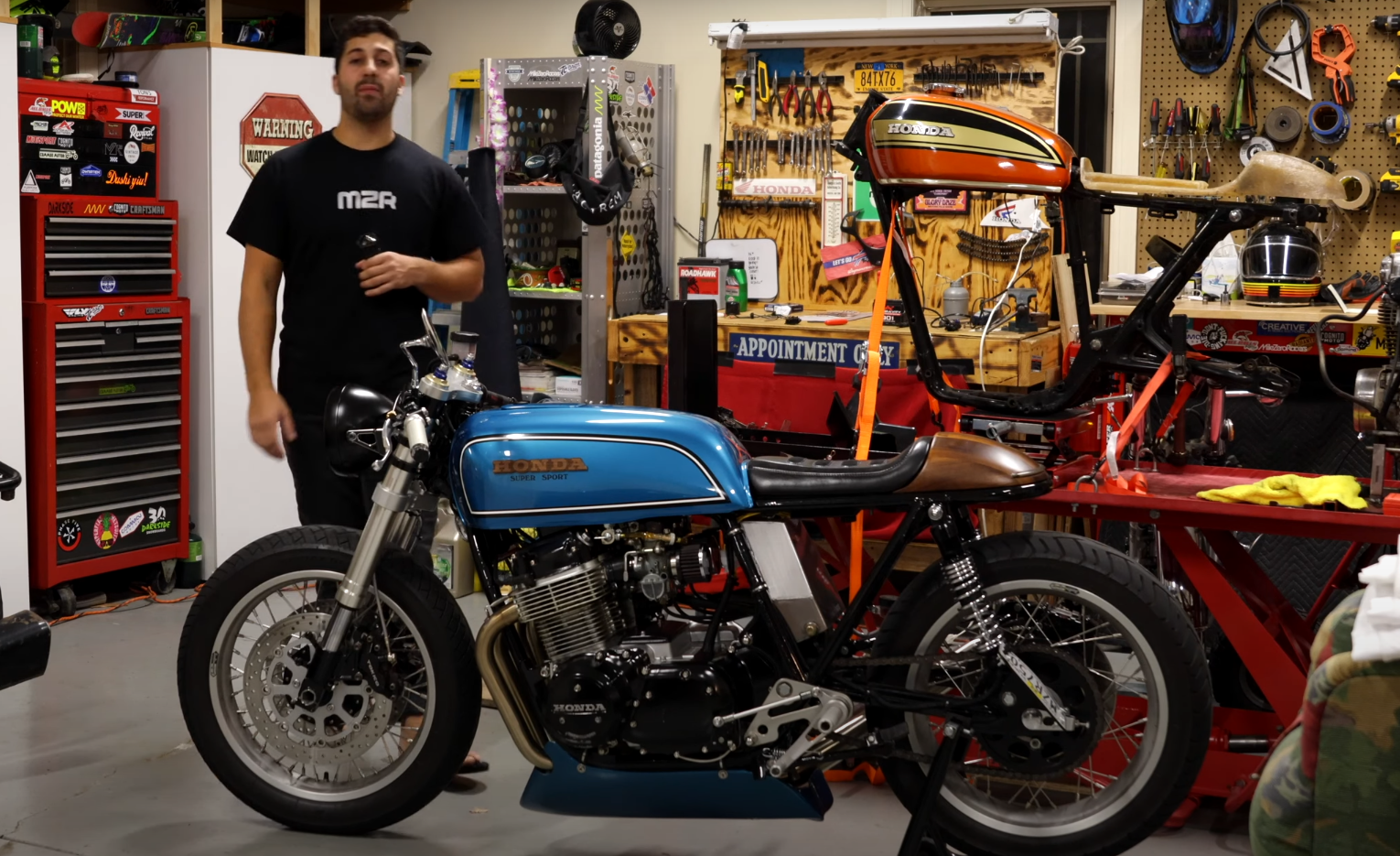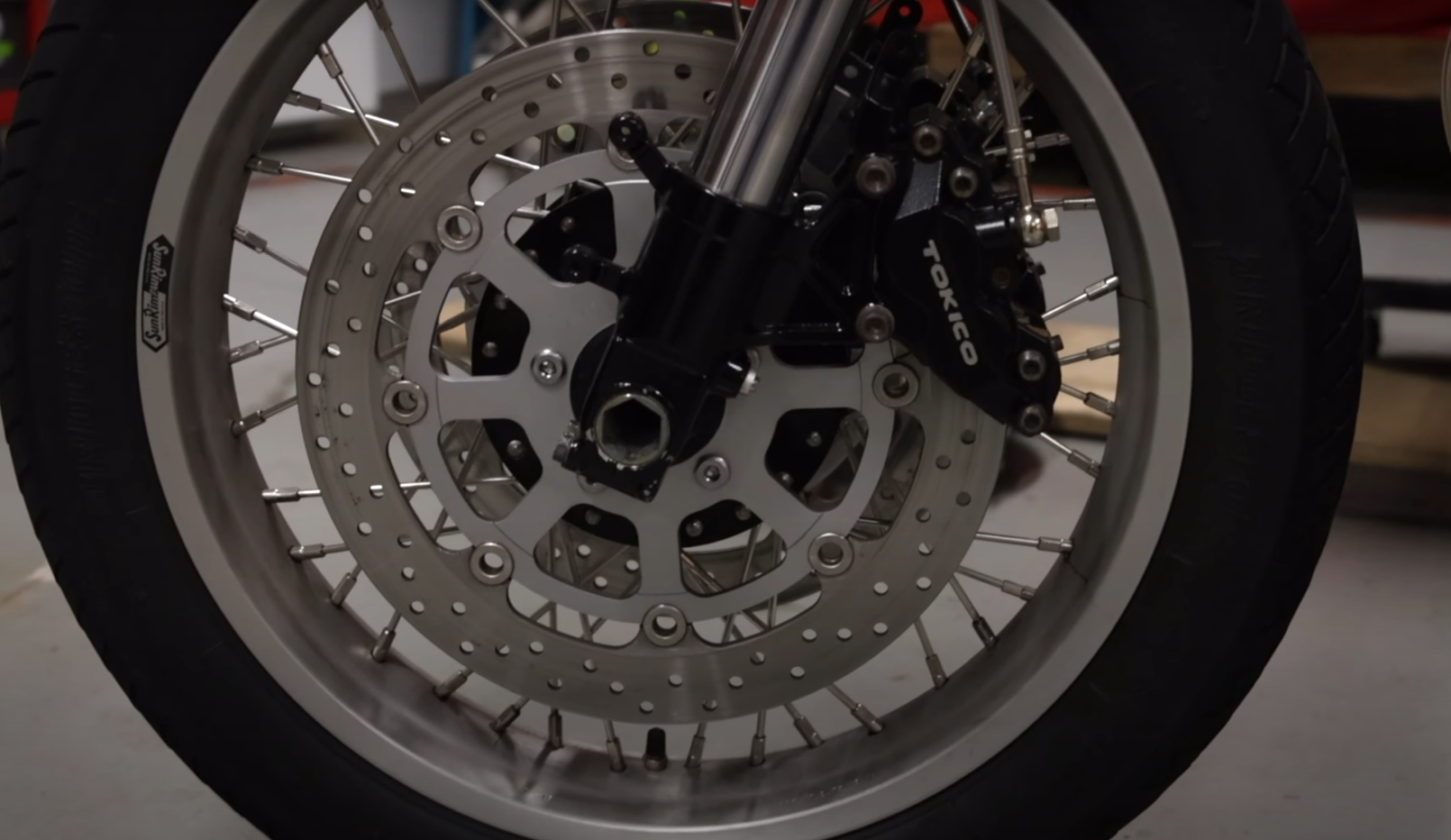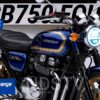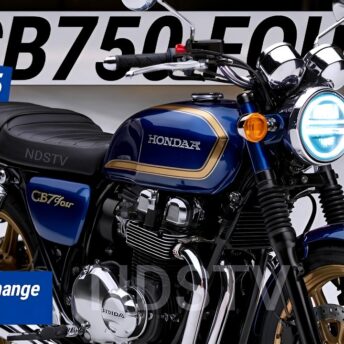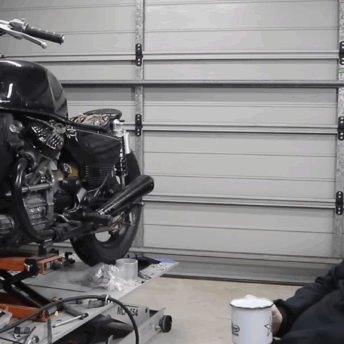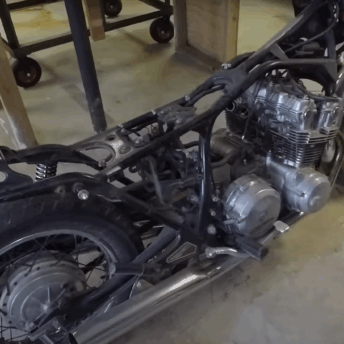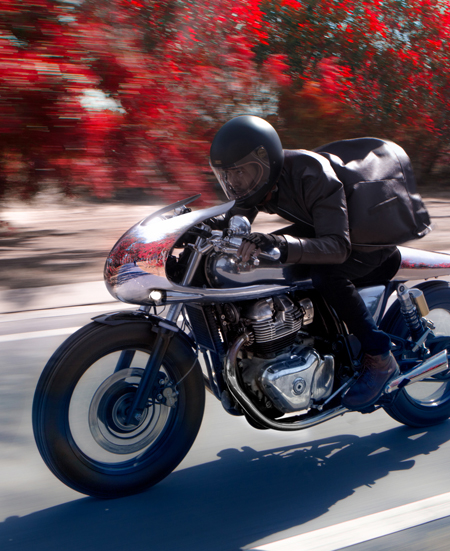The ClubSport build is a unique 1975 CB750F Café Racer project created by Thomas from Mile Zero Racers. This build started from a simple idea and a big vision. Even with no experience, Thomas was determined to bring his concept to life, focusing on classic style and a few modern touches while keeping the motorcycle’s history alive.
Throughout the process, Thomas worked on every part of the bike, starting with the rear section and moving forward. He chose special materials like a walnut wood cowl and a custom metallic blue tank. The engine was fully restored, showing dedication and problem-solving through every challenge. This build is not just about creating a motorcycle, but also about connecting with the community and inspiring others on their own journeys.
Key Takeaways
- The ClubSport build combines classic and modern features on a vintage motorcycle.
- Each part was carefully customized, including the rear section, midsection, tank, and graphics.
- Restoring the engine and sharing the process helped build a strong community connection.
Summary of the ClubSport Project
Purpose and Direction
The ClubSport project sets out to blend both tradition and fresh ideas in classic motorcycle building. The focus is on giving a vintage Honda CB750F a clean, simple look while using a few modern touches. The builder wants to connect with a wide range of enthusiasts, making the process more accessible, especially for beginners, by showing that anyone can start from scratch and achieve their own vision.
Key goals:
- Keep the build lightweight and minimal
- Mix classic elements with new parts
- Inspire others to begin their own projects
Source of Ideas and Background
The builder chose the 1975 Honda CB750F because of its significance and strong reputation in the motorcycle world, especially in the United States during the 1970s. This model is valued for its influence on motorcycle culture and its broad appeal among both seasoned riders and newcomers. The decision to use this bike came from a deep personal interest in its style and the potential for custom work.
Features from the build:
| Part | Customization Details |
|---|---|
| Rear Cowl | Handmade from solid walnut wood |
| Seat | Custom made for this project |
| Tank | Painted Atlantis Blue Metallic |
| Engine | Fully rebuilt, original model |
| Modern Additions | Upgraded electronics and hardware |
Mile Zero Racers’ Approach
Mile Zero Racers operates with the idea that everyone, regardless of experience, starts their journey at the same point. The goal is to help unite people with a shared passion for building motorcycles, helping each other by answering questions and sharing ideas. This project demonstrates a practical approach, combining classic designs with new techniques, and is meant to show that building a dream bike is possible for anyone who is dedicated and resourceful.
- Welcomes both beginners and experts
- Encourages a supportive and active community
- Combines hands-on learning with a creative mindset
Picking the 1975 CB750F Café Racer
Why This Model Stands Out
The 1975 CB750F caught attention for its design and the chance it gives riders to show their own style. Older bikes like this make it possible to build something unique by mixing vintage looks with personal touches. The classic shape and strong frame of the CB750F allow for many custom upgrades, which is why it was chosen for the café racer project. Riders often like how these bikes can be both simple and stylish.
Here is a quick look at what makes this model special:
| Feature | Why It Matters |
|---|---|
| Vintage Frame | Good base for customization |
| Classic Engine | Known for sound and reliability |
| Unique Style | Lets builders add personal flair |
The Effect on Motorcycle Culture
The 1975 CB750F changed how people saw motorcycles in the United States and beyond. It played a big role in making bikes popular with all sorts of riders, whether new or experienced. This model is part of the reason café racer builds became a trend. The CB750F made it easier for anyone to start working on bikes and inspired a lot of new builders. Its history still matters today and keeps influencing people who want to build their own dream bikes.
Design and Style Standouts
Classic Look
- The bike keeps the traditional shape and lines from the 1970s CB750F, preserving its well-known style.
- Features like the wooden cowl made from solid walnut add a unique touch. The cowl is hand-shaped and sealed for durability.
- Chrome and metal parts, such as the silver shocks and wheels, stay true to the retro theme.
- The blue fuel tank uses a rare Atlantis Blue Metallic paint, a color usually seen on BMW motorcycles.
- Custom touches include laser-etched logos and a hidden brake light in the wooden cowl, instead of the common rear frame placement.
Updated Features
- Modern upgrades blend with classic parts, such as Cognito Moto rear set brackets and foot pegs made from high-quality aluminum.
- The custom seat and seat pan are crafted for comfort and a tailored fit, designed by skilled makers.
- Under the seat, the bike includes Moto Gadget electronic components, such as the M unit blue and an RFID ignition system, all carefully rewired for reliability.
- The oil reservoir stands out with a hand-finished look using a wire wheel and clear coat, instead of the typical black color.
- These additions give the bike a more current feel while keeping the classic look that makes the CB750F special.
Rear Section Customizations
Handcrafted Wood Rear Cover
This bike features a unique rear cover that’s custom-shaped from solid walnut wood. The builder designed it first with foam before transferring the shape to the wood. It is sealed and finished to be just as protective as a surfboard. The wood is hollow underneath to hold the battery and features a laser-etched logo. A small recess is made into the cover to fit the rear brake light.
Back Wheel Sizing
- Width: 4.25 inches
- Diameter: 18 inches
The rear wheel matches the low, clean look the builder wanted for the café racer style.
Details on Rear Brake and Swing Arm
The original Honda CB750F rear swing arm is kept, along with the stock rear brake caliper and disc brake. This maintains the vintage performance and look of the bike while supporting the custom parts added to the rear.
Side Mounted Plate Display
The license plate is custom mounted on the side of the bike rather than at the usual spot on the frame hoop. This gives the rear a cleaner look and highlights the custom craftsmanship done on the wooden rear cover.
Midsection Upgrades
Handmade Saddle and Base
The seat was custom made with attention to both comfort and style. It sits on a one-off seat pan that fits the frame perfectly. The handcrafted design matches the bike’s unique look and ties the midsection together.
Oil Tank Detailing
The oil tank in the midsection uses a Cognito Moto reservoir, but it stands out with a unique finish. Instead of the usual black, it has been wire-brushed for an original pattern and then sealed with a clear coat for protection. This gives the oil tank a different look compared to standard builds.
Rear Controls and Foot Rest Options
The rear set brackets and foot pegs are from Cognito Moto. These parts use high quality aluminum, making them sturdy and light. Their simple and clean design adds a modern touch without losing the bike’s classic appeal.
Moto Gadget Electrical Add-Ons
A Moto Gadget M.unit Blue is installed below the seat for advanced wiring and controls. The system also includes a Moto Gadget RFID key for extra security. This electronic setup helps keep the wiring clean and modernizes the bike’s electrical system.
Tank Finish and Custom Graphics
Deep Blue Metallic Paint
The fuel tank features a vibrant metallic blue color. This shade is called Atlantis Blue Metallic, a paint option usually seen on certain BMW motorcycles, and has an official individual paint code. The paint gives the tank a bold and eye-catching finish that stands out and adds a modern touch to the vintage CB750F.
- Type: Metallic blue (Atlantis Blue Metallic)
- Origin: BMW individual paint collection
- Effect: Glossy, high-impact appearance
- Paint code: BMW 399 (Atlantis Blue Metallic)
Custom Laser-Engraved Honda Emblems
The tank has laser-etched Honda badges for a clean, custom appearance. These engraved logos make the Honda branding more unique and closely tie the design to the handcrafted rear cowl, which also has an etched logo. By choosing to engrave instead of using standard badges, the builder connects the tank and rear section in style while preserving the natural finish of each material.
- Techniques Used: Laser engraving
- Design Choice: Matches rear cowl’s logo treatment
- Purpose: Clean, unique finish without adding extra colors or materials
Engine Restoration and Performance
Complete Engine Overhaul
The engine in this 1975 CB750 was fully rebuilt from the bottom up. Every part was taken apart, inspected, and replaced as needed to make sure the motor was solid. The builder worked with a well-known CB750 expert, Mike Rick, to make sure everything was done right.
A careful approach was taken to clean, refresh, and reassemble each internal part. Worn parts, such as the camshaft, were fixed or replaced. The final result is an engine that both looks and runs like new.
Facing and Solving Engine Problems
The hardest part of this project was fixing the engine. The builder had never rebuilt a motor before and was worried after finding out the camshaft was badly damaged. Help was sought from online forums and from experienced CB750 mechanics.
Steps to deal with problems included:
- Getting advice from experts
- Learning new skills and using new tools
- Staying patient through setbacks
- Rebuilding every part of the engine
This process was a big learning experience. It pushed the builder to overcome tough challenges and keep pushing forward.
Boosting Power and Reliability
Performance improvements went beyond just rebuilding the engine. The builder used high-quality replacement parts and made sure each piece was installed with care. The goal was not just to restore reliability, but to give the bike a little more power and kick.
Performance highlights:
| Upgrade Type | Details |
|---|---|
| Engine rebuild | Full bottom-to-top restoration |
| Component inspection | All parts checked and refreshed |
| Specialist collaboration | Advice and hands-on help |
These steps resulted in a strong-running engine that performs and sounds as good as it looks.
Engaging with Builders and the Community
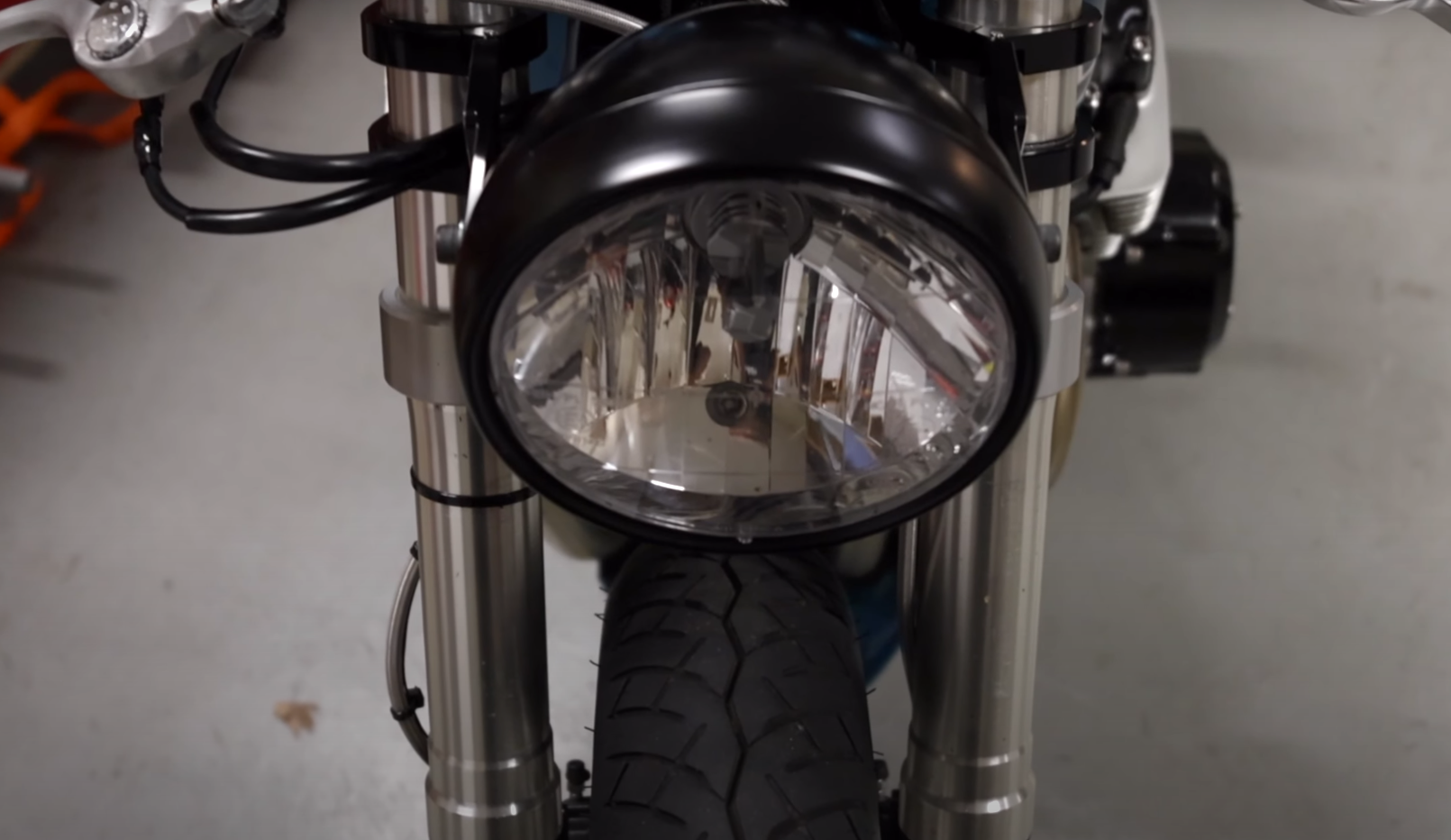

Guidance from Day One to Mastery
Building a Cafe Racer, especially one like the 1975 CB750F, is a challenge for newcomers and seasoned builders alike. Thomas learned this by starting out without any experience or a full set of tools. Over time, he moved from being a beginner to someone who could handle tough problems like rebuilding an engine.
Support for Every Step:
- Answers for both beginners and experts
- Tips shared from real build experiences
- Encouragement to keep going, even when things get tough
This approach helps make the builder’s journey easier for everyone.
Bringing Together Similar Passionate People
Thomas likes to connect with others who are interested in building or restoring vintage bikes. He believes strong friendships and helpful advice can form when people with the same interests come together.
Ways the Community Stays Connected:
- Using forums to ask and answer tough questions
- Reaching out to woodworking and bike experts like Zach Berkeley
- Sharing updates, progress, and special tips with all followers
This community is built on sharing knowledge, helping each other, and celebrating progress at every level.
